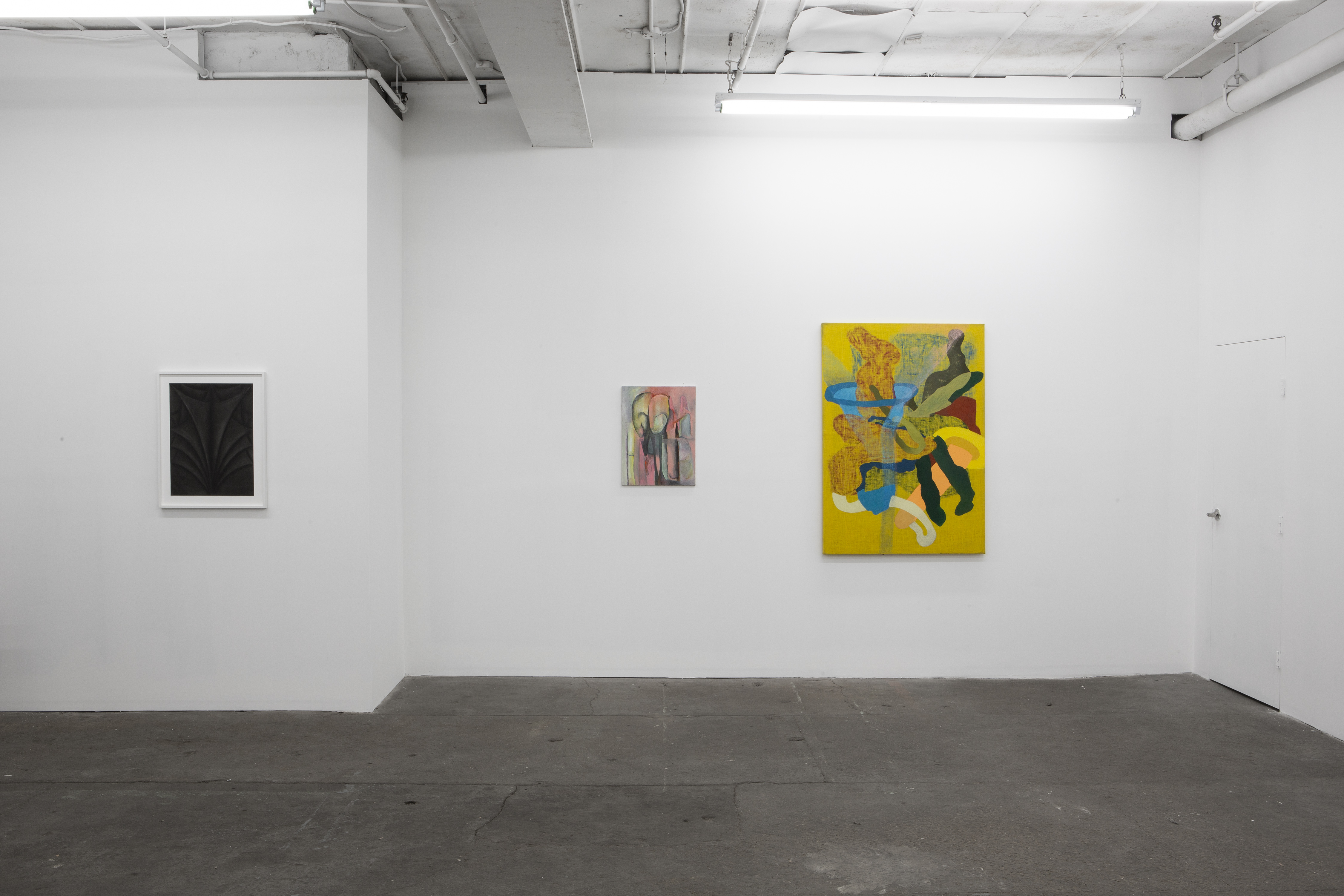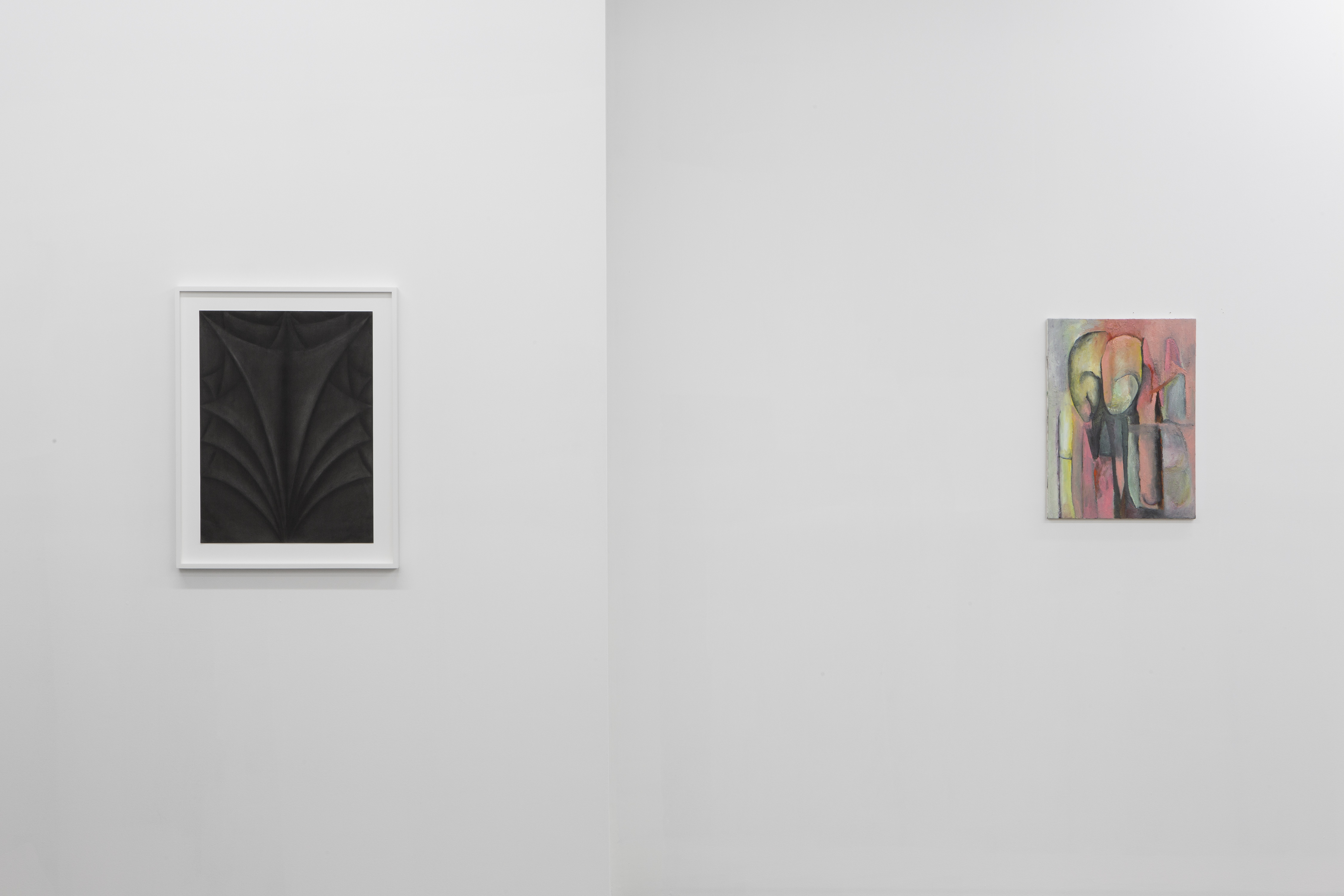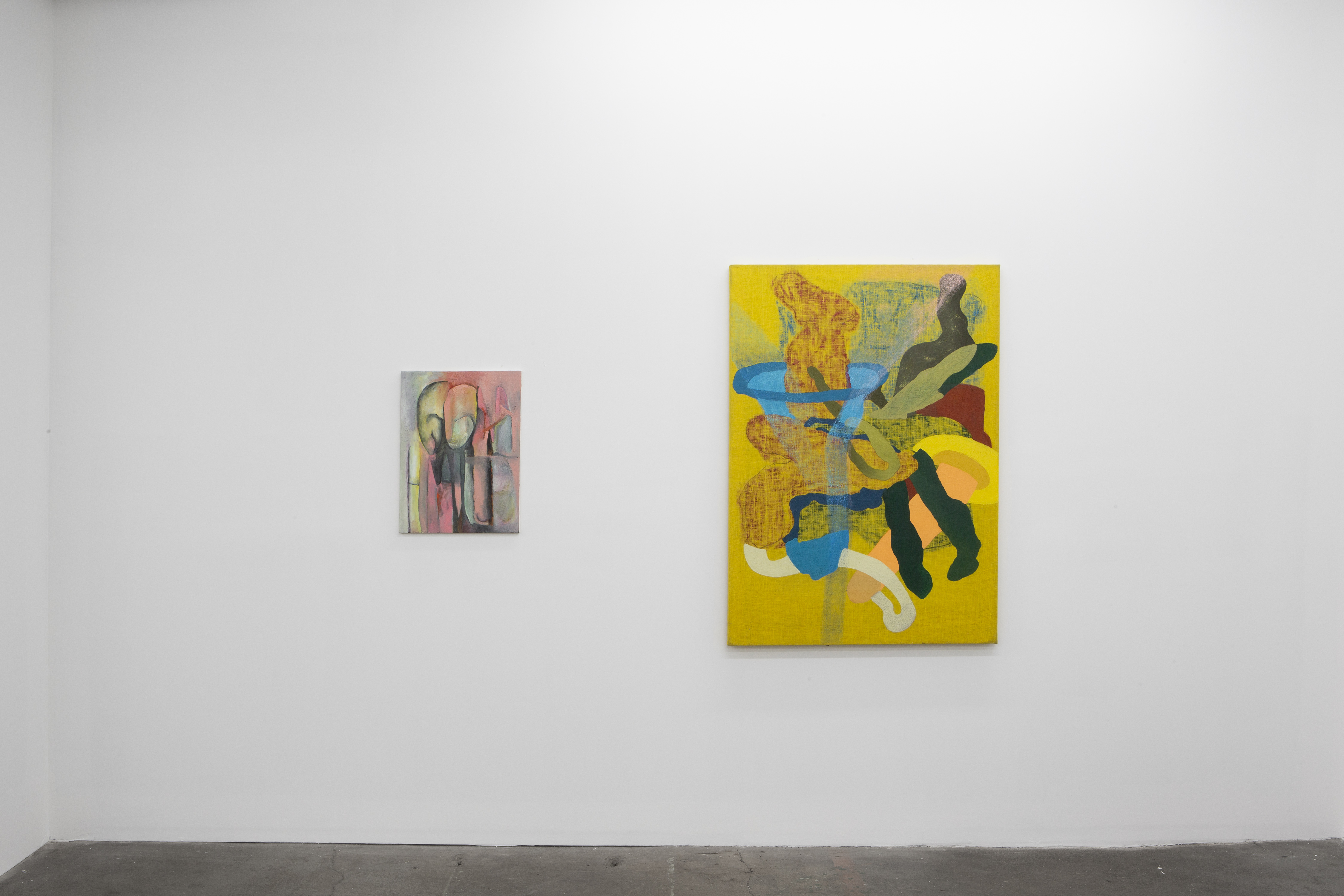Alisa Bones, George Carr, Rebecca Watson Horn, Kaveri Raina
spaceless
October 25–December 7, 2019




Deli Gallery is pleased to present spaceless, a group exhibition with recent works by Alisa Bones, George Carr, Kaveri Raina, and Rebecca Watson Horn. In spaceless, each artist explores beyond material borders to present varied considerations of abstraction.
Using the space of painting as a way to explore material tension and presence, Rebecca Watson Horn places the viewer in an open-ended narrative of color, language, intention, symbol, and image, embracing content and meaning in a divine exploration of abstract space. Here, language becomes symbol as Watson Horn encodes various meditations, intentions, and prayers into a more nebulous, independent continuum of colors and shapes— transcending beyond the barriers of the material and spiritual self.
Kaveri Raina’s approach to abstraction combines bold gestures, electric colors, and anxious yet spontaneous biomorphic forms together in a playful dance. Irregular and curvaceous anatomical forms burst while painting from the back and front of permeable material like woven burlap. As such, Raina’s fragments of specific colors come from her past and update the existing vocabulary of abstraction by placing it within a contemporary context.
An ongoing play between chaos and order, Alisa Bones’ weightless compositions offer a place for poetic speculation, for fantasy and freedom in a lasting transformative exchange. Solid backgrounds brim with irregular lines. Emotive color flows across the surface in dark lakes. Located somewhere between the tangible and ephemeral—absence and presence—the incorporeality of Bones' panels is made all the more striking by the spaceless, single plane on which they are conceived.
George Carr’s charcoal works on paper conjure liminal spaces poised on the verge of ecstatic transformation—vigorous explorations somehow both capricious and bracingly resolute. Curvilinear forms are drawn from geometric and mathematical prototypes, referencing the mind, soul, memory, and time in equal measure. By stimulating a language of metaphysics—through the destabilizing use of negative space—Carr reveals a kaleidoscopic movement between number and form.
Taken together, these four artists present various material and theoretical considerations of balance and memory through the manipulation of surface. Through layering and repetition, each artist’s process conveys a deep curiosity about form, color, and space, as well as a reassessment of painting traditions through an exploration of memory through time. In each case, the use of abstraction creates new emotional and cognitive associations within the inner states of one’s own memory and inner territories.
Using the space of painting as a way to explore material tension and presence, Rebecca Watson Horn places the viewer in an open-ended narrative of color, language, intention, symbol, and image, embracing content and meaning in a divine exploration of abstract space. Here, language becomes symbol as Watson Horn encodes various meditations, intentions, and prayers into a more nebulous, independent continuum of colors and shapes— transcending beyond the barriers of the material and spiritual self.
Kaveri Raina’s approach to abstraction combines bold gestures, electric colors, and anxious yet spontaneous biomorphic forms together in a playful dance. Irregular and curvaceous anatomical forms burst while painting from the back and front of permeable material like woven burlap. As such, Raina’s fragments of specific colors come from her past and update the existing vocabulary of abstraction by placing it within a contemporary context.
An ongoing play between chaos and order, Alisa Bones’ weightless compositions offer a place for poetic speculation, for fantasy and freedom in a lasting transformative exchange. Solid backgrounds brim with irregular lines. Emotive color flows across the surface in dark lakes. Located somewhere between the tangible and ephemeral—absence and presence—the incorporeality of Bones' panels is made all the more striking by the spaceless, single plane on which they are conceived.
George Carr’s charcoal works on paper conjure liminal spaces poised on the verge of ecstatic transformation—vigorous explorations somehow both capricious and bracingly resolute. Curvilinear forms are drawn from geometric and mathematical prototypes, referencing the mind, soul, memory, and time in equal measure. By stimulating a language of metaphysics—through the destabilizing use of negative space—Carr reveals a kaleidoscopic movement between number and form.
Taken together, these four artists present various material and theoretical considerations of balance and memory through the manipulation of surface. Through layering and repetition, each artist’s process conveys a deep curiosity about form, color, and space, as well as a reassessment of painting traditions through an exploration of memory through time. In each case, the use of abstraction creates new emotional and cognitive associations within the inner states of one’s own memory and inner territories.
Deli Gallery - All Rights Reserved 2020
